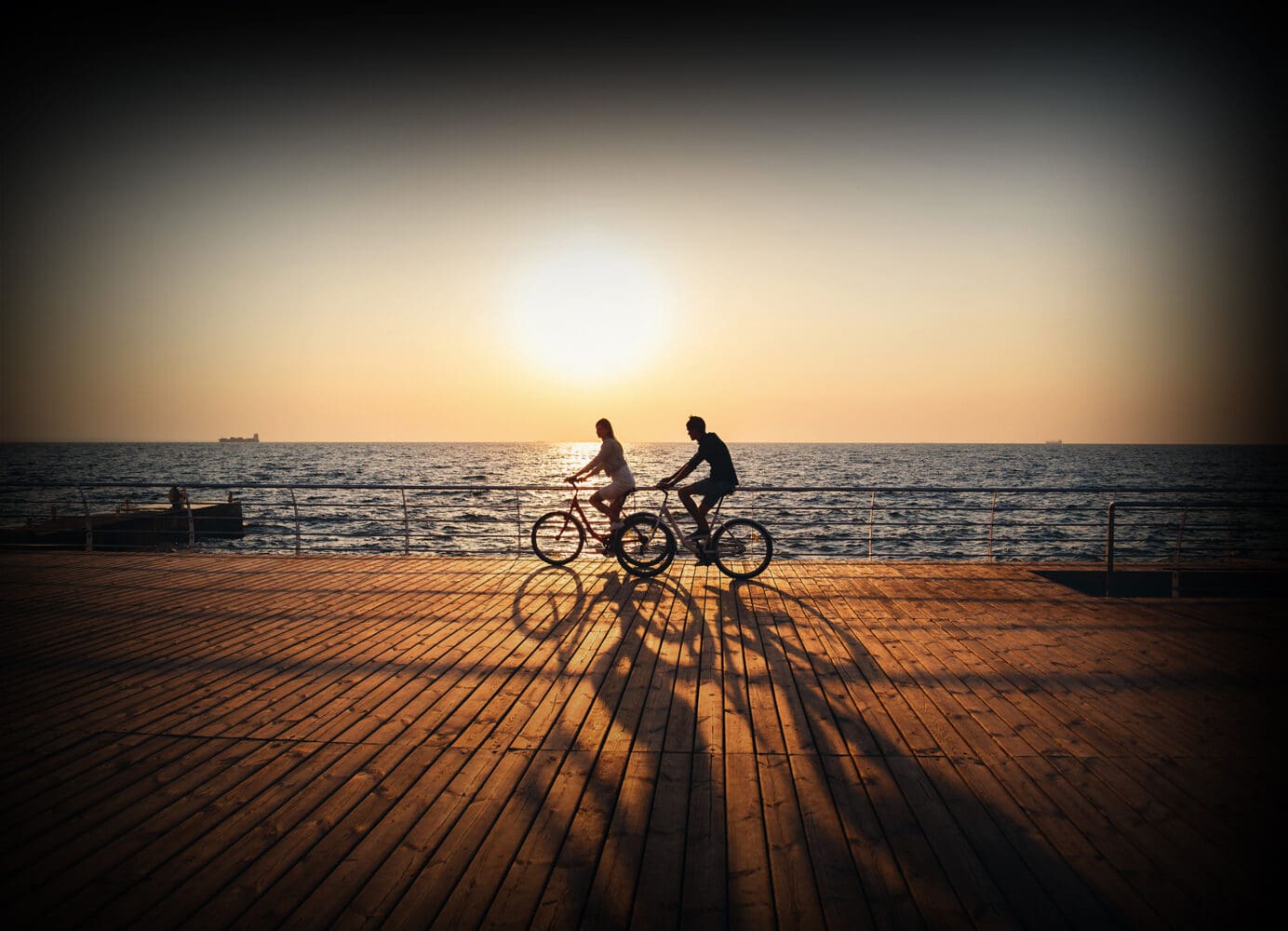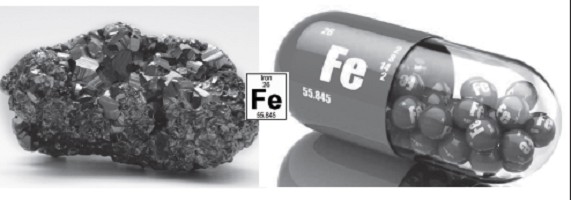
Thiếu sắt được ghi nhận là tình trạng thiếu hụt vi chất dinh dưỡng phổ biến nhất trên toàn thế giới. Có một số lý do giải thích cho điều này; tuy nhiên, lý do hấp dẫn nhất là khả năng không phải lúc nào cũng là do cơ thể thiếu sắt dẫn đến các dấu hiệu thiếu hụt mà là do cơ thể không có khả năng tái chế và sử dụng sắt dự trữ. Có những vi chất dinh dưỡng khác hỗ trợ chức năng sắt lành mạnh trong cơ thể. Bất kể thế nào, chúng ta vẫn cần bổ sung sắt từ chế độ ăn hàng ngày và nhiều chế độ ăn hiện đại thiếu sắt sinh khả dụng. Tất cả chúng ta đều nghĩ rằng mình biết về sắt, nhưng trên thực tế, đây có thể là một trong những khoáng chất bị hiểu lầm nhiều nhất. Hãy cùng tìm hiểu sâu hơn và xem liệu chúng ta có thể làm sáng tỏ điều gì không. Hãy thắt dây an toàn; sẽ hơi chuyên môn một chút…
Thiếu sắt?
Tổ chức Y tế Thế giới coi sắt là vi chất dinh dưỡng thiếu hụt nhiều nhất trong chế độ ăn uống toàn cầu, với gần một phần ba dân số bị ảnh hưởng. Phụ nữ đặc biệt dễ bị ảnh hưởng, với kinh nguyệt hàng tháng thường xuyên làm giảm lượng sắt dự trữ của họ. Ngoài ra, phụ nữ ở các nước phát triển có nhiều khả năng tránh thịt đỏ trong chế độ ăn uống của họ do các hướng dẫn dinh dưỡng lỗi thời, dựa trên khoa học không đầy đủ vào giữa đến cuối thế kỷ XX—sẽ nói thêm về điều đó sau. Người cao tuổi cũng có thể bị thiếu sắt khả dụng sinh học, và trẻ em và người lớn ở các nước nghèo có khả năng cao bị ảnh hưởng bởi tình trạng thiếu sắt lượng hấp thụ. Các nguyên nhân khác gây ra tình trạng thiếu sắt có thể là chảy máu đường tiêu hóa, tình trạng thận và ruột, nhiễm trùng (đặc biệt là sốt rét và ký sinh trùng), sinh con ở các nước đang phát triển hoặc chế độ ăn uống kém. Sắt rất cần thiết để hỗ trợ sản xuất năng lượng, chức năng não và thần kinh, và hoạt động của enzyme, nhưng nó được biết đến nhiều nhất với vai trò trong hemoglobin.
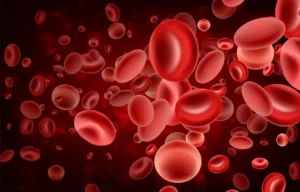
Sắt thấp hoặc không được sử dụng hết dẫn đến nồng độ hemoglobin thấp trong các tế bào hồng cầu của chúng ta. Hemoglobin vận chuyển oxy qua máu của chúng ta và nếu có quá ít hoặc có các tế bào hồng cầu bất thường hoặc quá ít hemoglobin, sẽ có ít oxy đến các mô của cơ thể. Nếu điều này xảy ra, chúng ta có thể bắt đầu cảm thấy mệt mỏi, tay chân lạnh, cảm thấy yếu, chóng mặt hoặc choáng váng, hoặc khó thở, và sau đó có thể dẫn đến niêm mạc và da nhợt nhạt, dễ bị bầm tím, nhịp tim và nhịp thở nhanh, v.v. Khả dụng sinh học và/hoặc sử dụng sắt thấp có thể dẫn đến các biểu hiện tương tự, cũng như không dung nạp histamine và stress oxy hóa, trong số những biểu hiện khác. Khả dụng sinh học chỉ đơn giản có nghĩa là cách một chất dinh dưỡng được tiêu hóa và hấp thụ trong ruột của chúng ta và cách nó được chuyển hóa và sử dụng trong cơ thể.
Đồng và Retinol
Chúng ta biết rằng vitamin C hỗ trợ quá trình hấp thụ sắt không phải heme từ thực vật, trứng và sữa trong ruột. Chúng ta biết rằng sắt heme từ thịt dễ hấp thụ hơn và không cần vitamin C. Nhưng bạn có biết rằng có bằng chứng cho thấy rằng "thiếu sắt" thực sự có thể là do thiếu đồng hoặc thiếu retinol (vitamin A) không? Retinol là cần thiết để gắn đồng vào ceruloplasmin và đồng là cần thiết để tạo ra ceruloplasmin. Ceruloplasmin là một glycoprotein mang đồng hỗ trợ việc sử dụng sắt trong cơ thể. Ceruloplasmin cũng oxy hóa và liên kết sắt với protein vận chuyển transferrin, protein này mang sắt đi khắp cơ thể để các mô khác nhau sử dụng và trở lại tủy xương để tái chế thành các tế bào hồng cầu mới. Ceruloplasmin là protein lớn nhất trong cơ thể chúng ta và thực hiện một số chức năng quan trọng, nhưng nhiệm vụ chính của nó là quản lý sắt và ngăn ngừa stress oxy hóa và hình thành các gốc tự do. Đồng cũng liên quan đến hephaestin, một loại protein oxy hóa gắn sắt vào transferrin để vận chuyển qua tĩnh mạch cửa đến gan sau khi hấp thụ ở ruột.
Nhân tiện, cần có đủ canxi, magiê, niacin (vitamin B3) và riboflavin (vitamin B2) để giải phóng sắt từ kho dự trữ trong ferritin để sử dụng trong tế bào và trong quá trình hấp thụ sắt không phải heme trong ruột. Mặc dù, trong mọi trường hợp, điều quan trọng là phải đảm bảo đủ các chất dinh dưỡng đó trong chế độ ăn, chúng tôi sẽ tập trung vào tầm quan trọng của đồng và vitamin A trong bài viết này. Về mặt dinh dưỡng, sắt có thể là một trong những khoáng chất thiết yếu bị hiểu lầm nhiều nhất và chúng ta phải quay ngược thời gian để tìm manh mối về những gì thực sự có thể xảy ra.
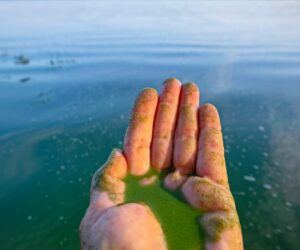
Hàng tỷ năm trước, sự sống duy nhất trên trái đất là kỵ khí, nghĩa là nó không cần oxy để sống. Sự sống là vi khuẩn đơn bào và vi khuẩn cổ sử dụng sắt để hô hấp và tạo ra năng lượng. Người ta cho rằng khoảng 2,4 tỷ năm trước, một trong những vi khuẩn đó, được gọi là oxyphotobacteria, đã phát triển khả năng quang hợp ánh sáng mặt trời, giải phóng oxy như một sản phẩm phụ. Đây được gọi là Sự kiện oxy hóa lớn, cuối cùng đã tạo ra bầu khí quyển của chúng ta. Bây giờ, oxy là một phân tử rất dễ phản ứng, đặc biệt là với sắt, vì vậy cần có thứ gì đó để quản lý oxy và sắt cũng như stress oxy hóa mà nó có thể gây ra. "Thứ gì đó" này chính là đồng. Nếu không có đồng, cụ thể là ceruloplasmin, chúng ta không thể sử dụng sắt hoặc ngăn sắt bị oxy hóa hoặc "gỉ". Và nếu không có vitamin A, chúng ta không thể tạo ra ceruloplasmin.
Tại sao chúng ta lại thiếu vitamin A? Và, nếu có, chúng ta có thiếu đồng…hay sắt không?
Hãy quay lại với "khoa học chưa hoàn thiện" trong thế kỷ trước. Toàn bộ câu chuyện quá phức tạp để đi sâu vào đây, nhưng kết quả là vào khoảng những năm 1970, các hướng dẫn về chế độ ăn uống đã bị đảo lộn: từ việc ưu tiên các loại thực phẩm động vật giàu dinh dưỡng và có khả năng sinh học - thịt, cá, nội tạng và sữa - sang thúc đẩy các loại thực phẩm từ ngũ cốc và carbohydrate và từ việc nhấn mạnh vào chất béo động vật giàu vitamin tan trong chất béo sang thúc đẩy các loại dầu hạt và thực vật công nghiệp. "Khoa học" mà các chính phủ phương Tây tuân theo là không chính xác và được phát hiện là như vậy thông qua các cuộc điều tra chi tiết hơn trong những thập kỷ sau đó: sau cùng thì không cần phải tránh chất béo bão hòa và cholesterol. Điều này đã quá muộn đối với nhiều công chúng không nghi ngờ gì, những người đã ngoan ngoãn tránh những thực phẩm truyền thống mà con người và người tiền sử đã ăn trong hàng triệu năm để ủng hộ các sản phẩm thực phẩm chế biến ít chất béo và kém dinh dưỡng. Tác động đến sức khỏe tổng thể của chúng ta là thảm khốc về mặt bệnh mãn tính.

Tất cả những điều đó liên quan gì đến vitamin A? Vitamin A là một loại vitamin tan trong chất béo chỉ có trong thực phẩm và chất béo từ động vật. Cụ thể, đây là vitamin A đã được hình thành, hay retinol, và là dạng vitamin A mà cơ thể chúng ta có thể dễ dàng hấp thụ và sử dụng. Vitamin A cần thiết, với số lượng lớn, để thực hiện vô số công việc quan trọng trong cơ thể. Để sắt được sử dụng đúng cách trong cơ thể, bạn cần đồng có khả dụng sinh học, gắn với ceruloplasmin; Để đồng liên kết với ceruloplasmin, bạn cần bổ sung nhiều vitamin A. Nếu đồng không thể liên kết với ceruloplasmin, nó có thể trở nên độc hại. Nếu không có đủ ceruloplasmin, sắt không thể liên kết với protein vận chuyển và có thể trở nên độc hại. Chúng ta lưu trữ vitamin A trong gan và mô mỡ, nhưng chế độ ăn truyền thống giàu vitamin A hơn nhiều so với chế độ ăn hiện đại của chúng ta, nghĩa là chúng ta có thể sử dụng nó nhanh hơn so với việc thay thế nó.
Có rất ít sự chuyển đổi "provitamin A" hoặc carotene, trong thực phẩm thực vật, thành retinol trong cơ thể, và nhiều người không thể thực hiện được sự chuyển đổi này. Điều đó có nghĩa là hầu hết chúng ta không thể hấp thụ đủ vitamin A từ cà rốt hoặc củ cải đường. Nhân tiện, tình hình cũng tương tự đối với omega-3 có nguồn gốc từ động vật: DHA và EPA.
Nhiều người trong chúng ta không nhận đủ đồng trong chế độ ăn uống của mình. Đất có thể thiếu đồng. Ngoài ra còn có những chất trong chế độ ăn uống và môi trường của chúng ta làm cạn kiệt đồng và/hoặc ceruloplasmin. Bao gồm glyphosate và các loại thuốc xịt công nghiệp khác, ascorbate, xi-rô ngô có hàm lượng fructose cao, đường tinh luyện, thuốc kháng sinh, tiếp xúc với ánh sáng nhân tạo và thuốc tránh thai đường uống.
Nguồn dinh dưỡng
Các nguồn đồng có khả năng sinh học cao nhất là từ thực phẩm động vật, đặc biệt là nội tạng (thịt nội tạng), phấn hoa ong và động vật có vỏ. Lượng cao nhất là trong gan, tình cờ rất giàu vitamin A và sắt (và hầu hết các loại vitamin và khoáng chất khác!). Gan và các loại nội tạng khác cũng chứa nhiều loại vitamin C phức hợp, cũng cần thiết để tạo ra ceruloplasmin. Nếu chúng ta nhìn vào các loại thực phẩm truyền thống, các loại thực phẩm mà chúng ta đã ăn kể từ khi chúng ta là con người, thì chúng ta có thể thấy sự khôn ngoan trong việc tiêu thụ các loại thực phẩm động vật có tất cả các chất dinh dưỡng vi lượng và đa lượng có khả năng sinh học mà chúng ta cần, theo tỷ lệ tối ưu và cân bằng hiệp đồng với nhau.
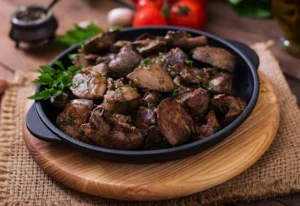
Đối với người bạn cũ của chúng ta, sắt, chúng ta có thể đã quá tập trung vào nó, nhưng mặc dù chúng ta tái chế hầu hết lượng sắt có thể sử dụng được trong hệ thống lưới nội mô, chúng ta vẫn cần phải nhận thức được lượng sắt hấp thụ hàng ngày của mình và lấy nó từ các nguồn sinh khả dụng nhất. Vì sắt được hấp thụ ở tá tràng, hoặc phần đầu của ruột non, và hầu hết các loại thực phẩm từ thực vật vẫn đang được phân hủy tại thời điểm đó, nên phần lớn sắt không phải heme có nguồn gốc thực vật có thể bị mất trước khi hấp thụ. Sự hấp thụ sắt trong ruột cũng bị ức chế bởi polyphenol, protein thực vật và phytate - rất cao trong ngũ cốc, hạt, hạt giống và đậu - và được tăng cường bởi protein thịt. Chúng ta có thể chắc chắn nhận được sắt heme sinh khả dụng, cùng với đồng và nhiều vitamin A đã hình thành (retinol), vitamin, khoáng chất và cofactor, trong các loại thực phẩm từ động vật đã nuôi sống con người và tổ tiên người vượn của chúng ta trong hàng triệu năm, nhưng nếu bạn vẫn lo lắng về lượng sắt hấp thụ, bạn luôn có thể tìm đến các chất bổ sung.
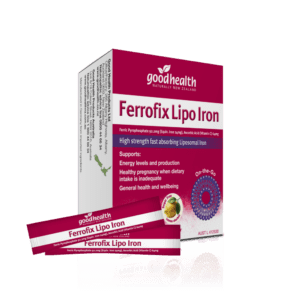 Ferrofix Lipo Sắt
Ferrofix Lipo Sắt
Good Health Ferrofix Lipo Iron là một loại thực phẩm bổ sung được nghiên cứu khoa học có chứa hàm lượng cao, 24mg, sắt Liposomal, một dạng sắt hấp thụ nhanh. Sắt được vi nang hóa, cùng với vitamin C, tăng cường khả dụng sinh học và khả năng hấp thụ. Ferrofix Lipo Iron hỗ trợ nồng độ sắt trong thời kỳ mang thai và khi chế độ ăn uống không đủ. Cung cấp liposome nhẹ nhàng cho đường tiêu hóa, làm giảm nguy cơ đau dạ dày. Ferrofix Lipo Iron là một giải pháp di động có thể dùng với hoặc không có nước, có hương vị chanh sherbert tuyệt vời và được đóng gói trong hộp 20 gói bột. Thích hợp cho người ăn chay và thuần chay.
Lượng sắt khuyến nghị hàng ngày RDI:
RDI cho sắt dựa trên những gì chúng ta sử dụng hàng ngày để giữ cho các tế bào hồng cầu của chúng ta khỏe mạnh và để sắt thực hiện các chức năng khác của nó so với những gì có sẵn trong thực phẩm. Khi trưởng thành, chúng ta sử dụng khoảng 25 mg sắt mỗi ngày và hầu hết lượng sắt đó sẽ được tái chế bởi hệ thống tái chế lưới nội mô khỏe mạnh; tuy nhiên, tốc độ chúng ta sử dụng sắt sẽ khác nhau tùy thuộc vào mức độ hoạt động, kích thước của chúng ta và nếu là nữ, độ tuổi/giai đoạn của chúng ta. Khoảng 30% sắt haeme từ thịt được hấp thụ trong ruột. Khoảng 1% (đậu) và 2% (ngũ cốc) đến 9% (rau lá xanh) sắt không phải haeme (có nguồn gốc từ thực vật) có thể được hấp thụ nếu có đủ vitamin C.
Phụ nữ 19-50 tuổi: 18mg mỗi ngày (32 mg cho người ăn chay/thuần chay)
Phụ nữ từ 51 tuổi trở lên: 8mg mỗi ngày (15mg cho người ăn chay/thuần chay)
Phụ nữ mang thai: 27mg mỗi ngày (49 mg cho người ăn chay/thuần chay)
Phụ nữ cho con bú: 9mg mỗi ngày (16 mg cho người ăn chay/thuần chay)
Nam giới từ 19 tuổi trở lên: 8mg mỗi ngày (15mg cho người ăn chay/thuần chay)
Những người ăn tạp, nên duy trì lượng dưới 45mg/ngày từ thực phẩm kết hợp với thực phẩm bổ sung.
Luôn đọc nhãn và sử dụng theo chỉ dẫn. Thực phẩm bổ sung vitamin và khoáng chất không nên thay thế chế độ ăn uống cân bằng. Nếu các triệu chứng vẫn tiếp diễn, hãy đến gặp chuyên gia chăm sóc sức khỏe của bạn. Để biết thêm thông tin, hãy liên hệ với bác sĩ y học tự nhiên của chúng tôi theo số 0800 446 634. Good Health, Auckland

